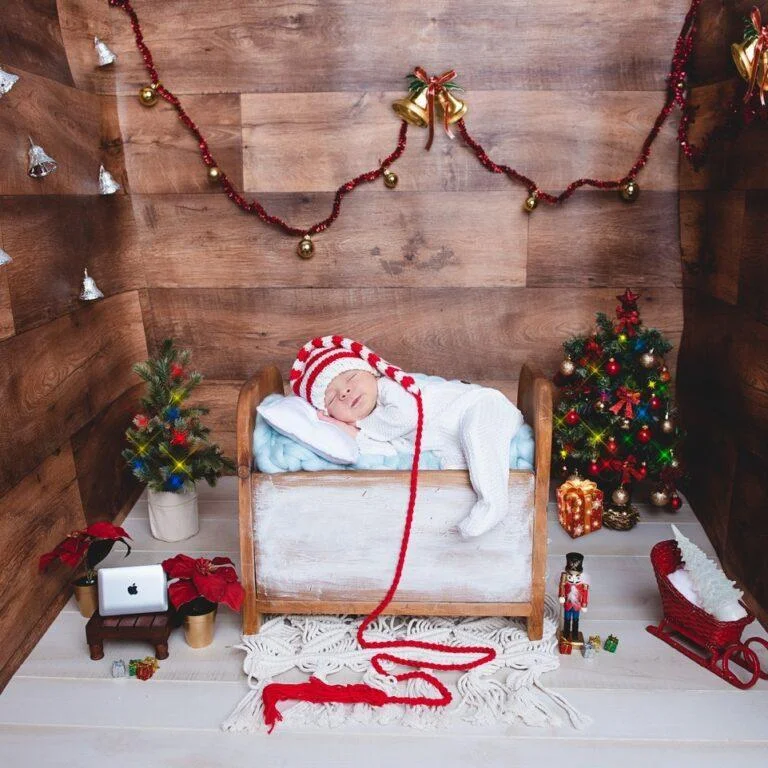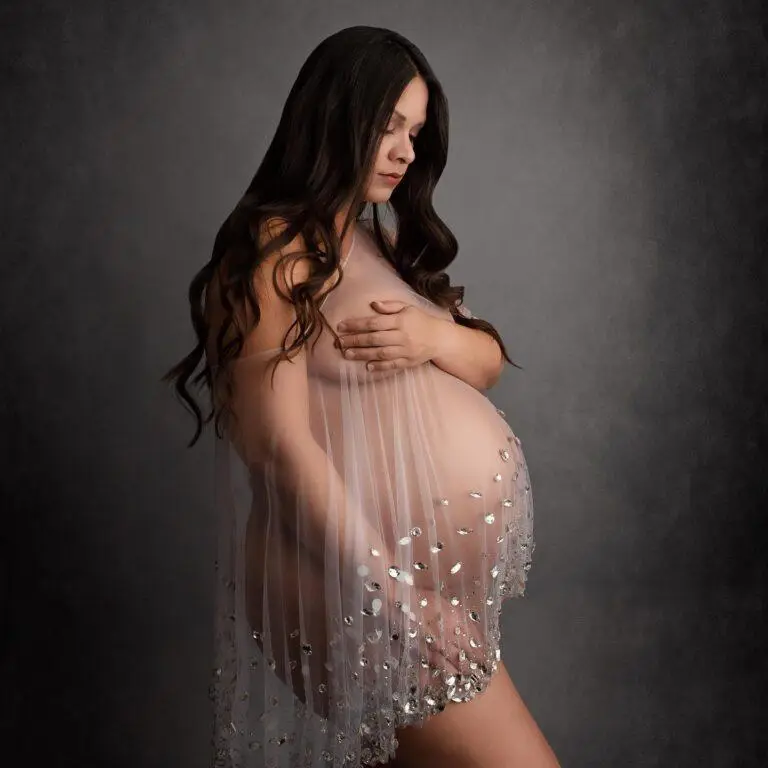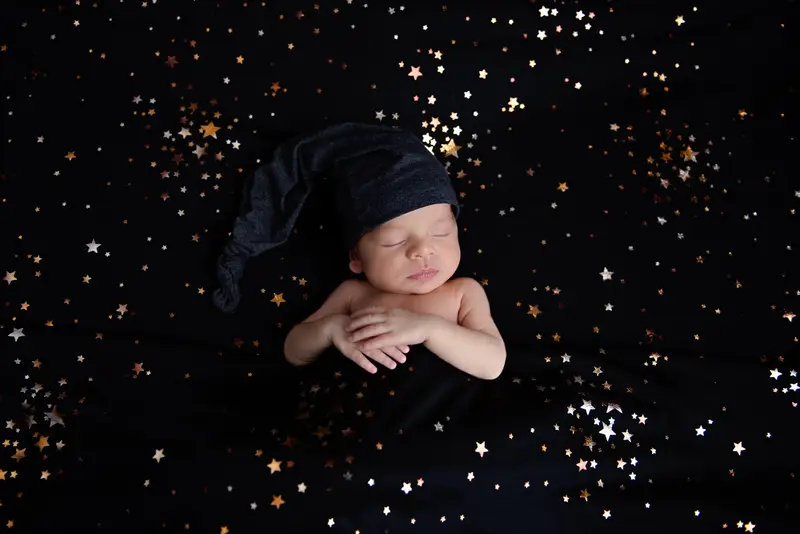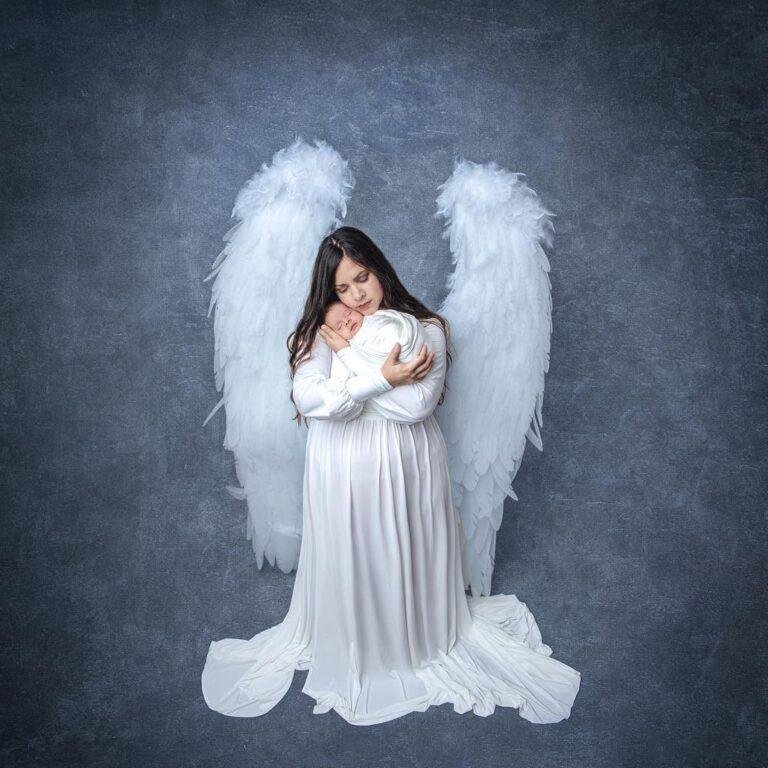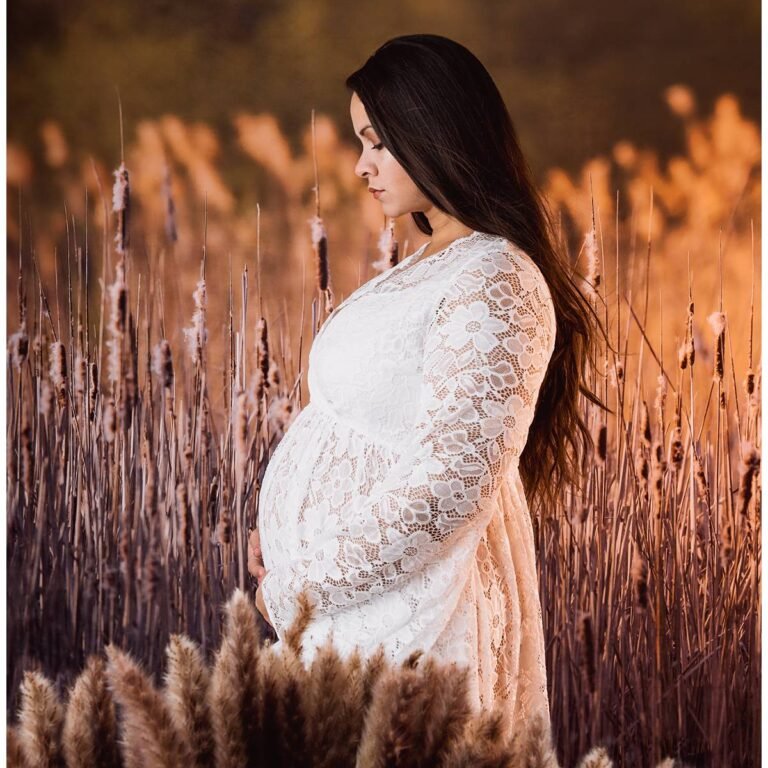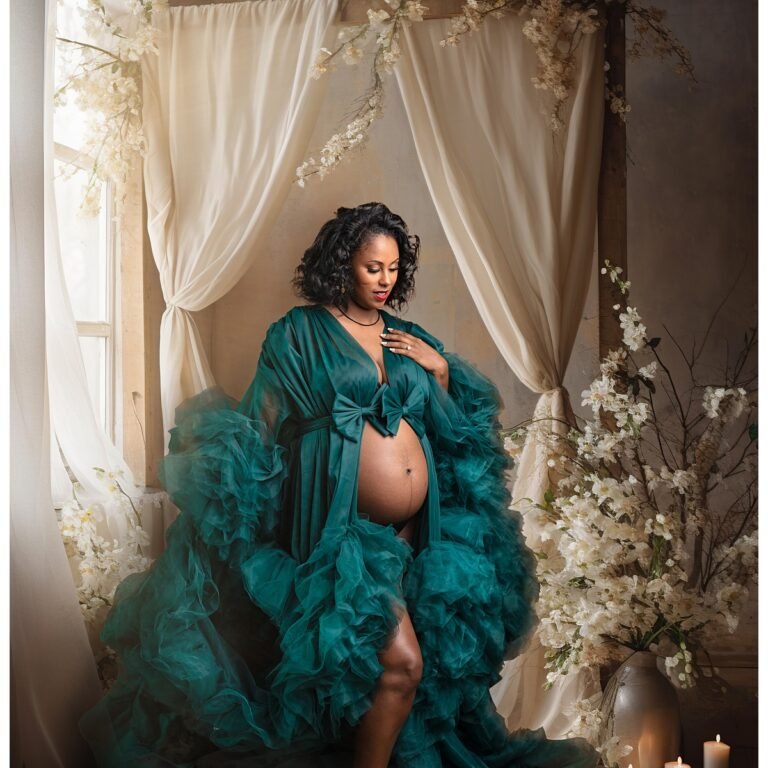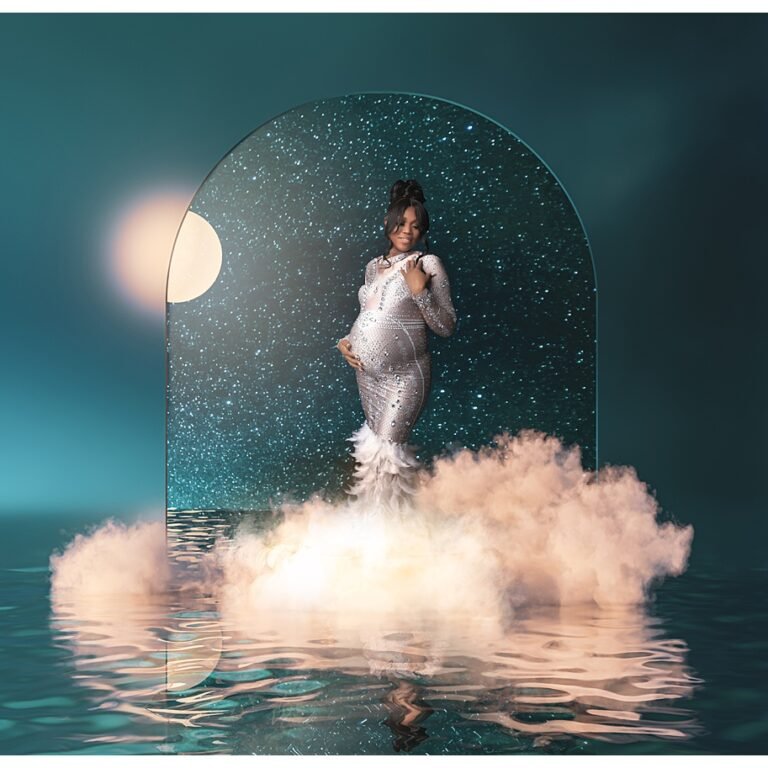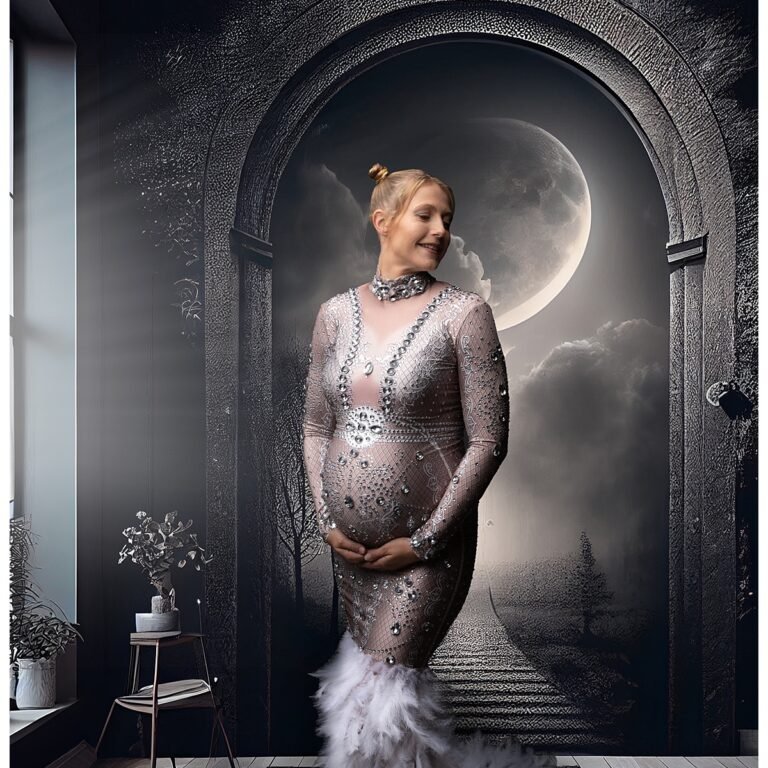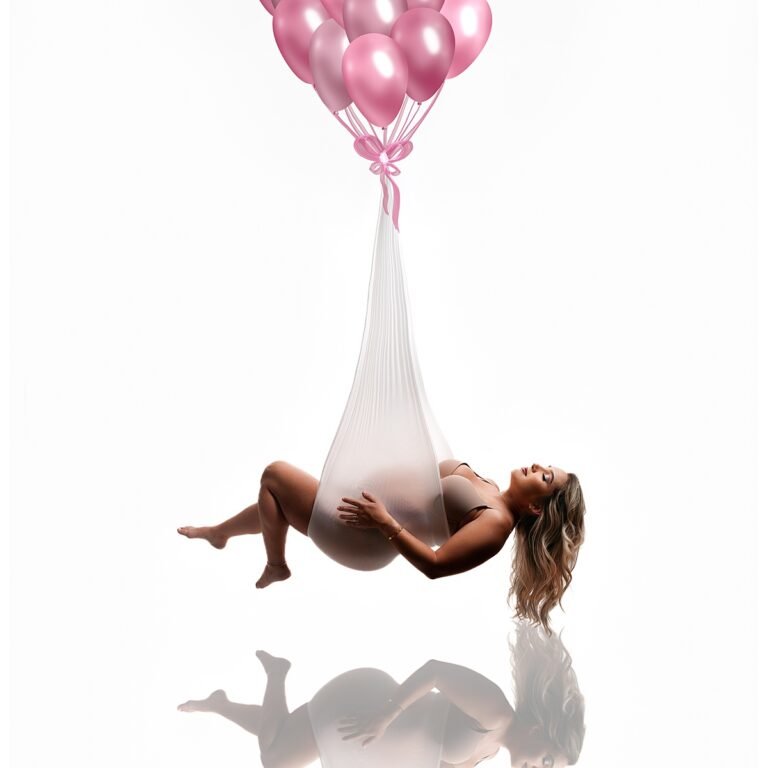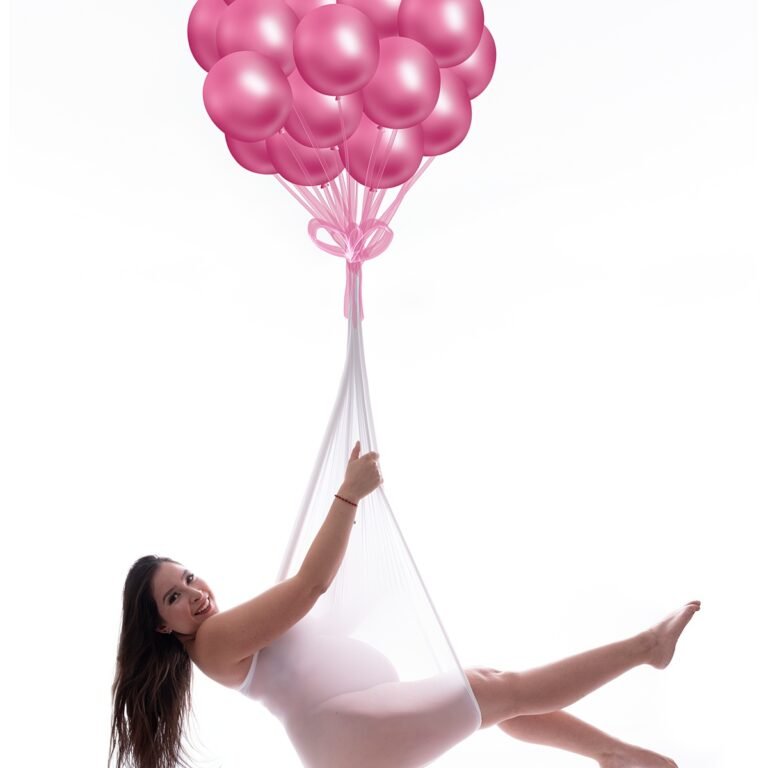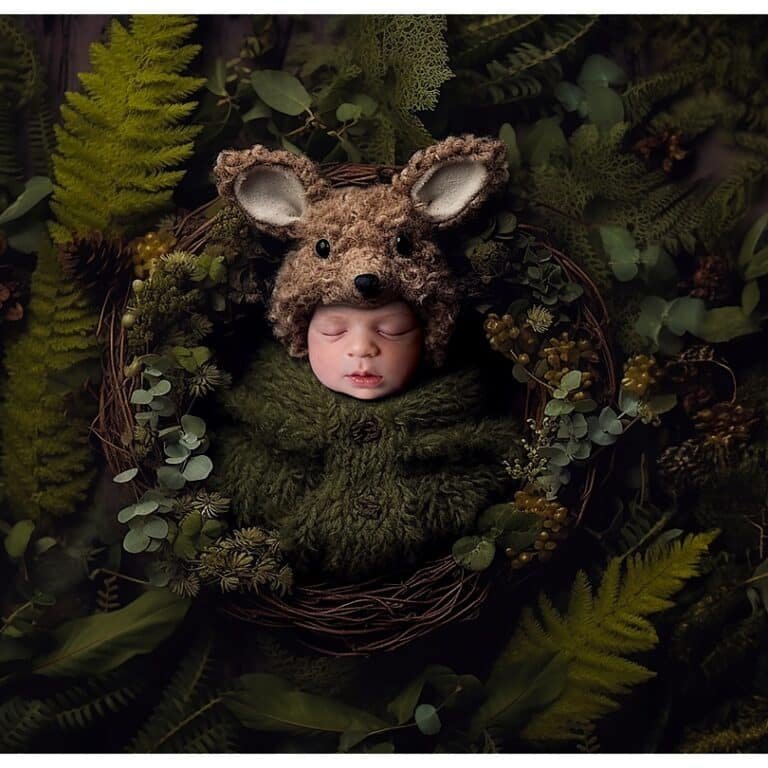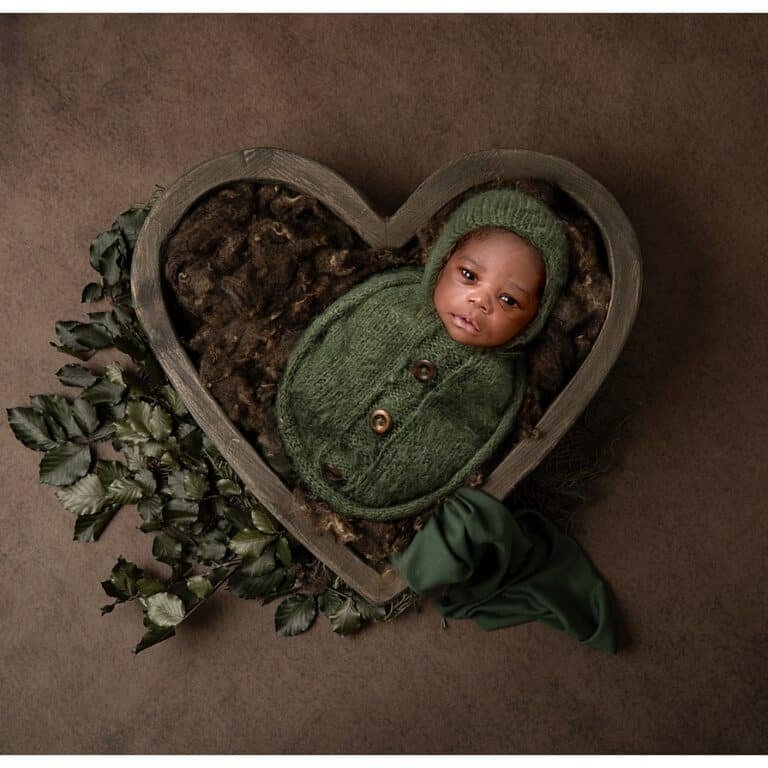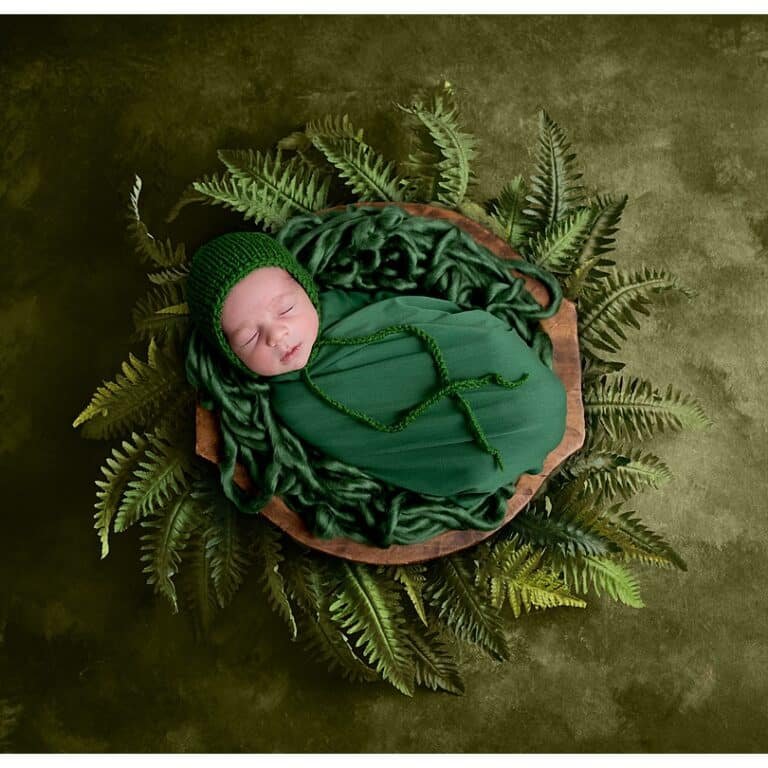- Blog
- Information
- Español
- Behind The Lens
- Portfolio
- Studio Maternity Photographer In Jacksonville
- Fine Art Maternity Photographer In Jacksonville
- Milk Bath Maternity Photography In Jacksonville
- Outside Maternity Photography In Jacksonville
- Newborn Photographer in Jacksonville
- Newborn with Parents Photographer in Jacksonville
- Cake Smash Photographer In Jacksonville
- Children Photographer In Jacksonville
- Breastfeeding Photography in Jacksonville
- FAQ
- Business Friends
- Resources
- Contact
Newborn Photography: Tips for Capturing Precious Moments

Newborn photography captures the fleeting moments of a baby’s early life. It creates lasting memories for families, showcasing the beauty and innocence of newborns. There are various styles of newborn photography, including studio, home, and DIY options. Each approach offers unique benefits and allows families to preserve these precious memories in their own way.
The Importance of Newborn Photography
Newborn photography plays a vital role in preserving fleeting moments. These early days are characterized by unique and irreplaceable experiences that families cherish forever.
Capturing Precious Moments
Every tiny detail of a newborn tells a story. From the delicate fingers and toes to the soft expressions that convey innocence and tranquility, newborn photography captures these ephemeral instances beautifully. It serves as a visual narrative of a baby’s first days, allowing families to look back on them with nostalgia.
- Every photo holds a special memory.
- Beautifully documents family milestones.
- Enhances the emotional connection between parents and their child.
These photographs are not just images; they become cherished heirlooms that families will treasure for generations. They provide a way to record the incredible journey of life from its very beginning, making it an essential part of family history.
Emotional Impact on Families
The emotional significance of newborn photography cannot be overstated. These images resonate with love, hope, and joy, capturing the essence of a family’s newest member. The act of photographing a newborn creates a bond that deepens the appreciation and affection for the child.
- Creates lasting memories that evoke strong emotions.
- Highlights the love and connection among family members.
- Offers a moment of reflection during a life-changing transition.
When families look back at these photographs, they are often reminded of the overwhelming joy and challenges of those early days. Newborn photography immortalizes not only the baby but the love that surrounds them, evoking feelings of warmth and comfort.
Types of Newborn Photography
There are several styles and approaches to newborn photography, each offering unique perspectives and experiences. Understanding these different types enables families to choose the best method to capture their baby’s early moments.
Studio Photography
Studio photography typically involves professional photographers who have access to specialized equipment and controlled environments. This style allows for the use of backdrops, props, and lighting that can be fine-tuned to create stunning visuals. Key characteristics include:
- Controlled Environment: Photographers can manage lighting and backgrounds to achieve specific looks.
- Professional Equipment: High-quality cameras, lenses, and lighting gear are often used to create sharp and detailed images.
- Variety of Props: Studios usually have a range of accessories, from blankets to hats, which help enhance the theme of the shoot.
- Expertise: Professional photographers bring experience to safely pose newborns and find the best angles.
Home Photography
Home photography offers a more intimate and personal approach. Capturing images in the baby’s home environment creates a relaxed atmosphere. This style allows for the inclusion of everyday settings that can be meaningful to the family. Some aspects include:
- Natural Feel: Photos taken in familiar surroundings often portray authentic family moments.
- Flexibility: Families can choose the time of day that works best for them, accommodating the baby’s schedule.
- Personal Touch: Parents can incorporate items and spaces that hold sentimental value, such as the nursery or family heirlooms.
- Comfort: Babies may feel more at ease in their own space, leading to more natural expressions and poses.
DIY Newborn Photography
Do-It-Yourself (DIY) newborn photography has gained popularity as many parents wish to take their own photos. This approach offers a fun, creative outlet while capturing those early days. Key components of DIY photography include:
- Accessibility: With advanced smartphone cameras and affordable equipment, families can take quality photos from home.
- Creativity: Parents can explore their artistic side by experimenting with angles, props, and backgrounds.
- Cost-effective: DIY photography eliminates the need for a professional photographer, making it budget-friendly.
- Memorable Experience: The process of setting up a shoot can create lasting memories for families as they bond over this special time.
Finding a Newborn Photographer Near You
Locating a skilled newborn photographer is crucial for capturing those precious early days of a baby’s life. Understanding what to look for and the right questions to ask can make a significant difference in the experience and outcome.
What to Look For in a Photographer
Choosing the right photographer involves several factors. A well-rounded selection will ensure not only quality images but also a comfortable atmosphere during the session.
- Experience and Specialization: Look for professionals who specialize in newborn photography. Their experience handling delicate infants and their unique posing styles will greatly enhance the quality of the photos.
- Portfolio: Check the photographer’s portfolio to assess their style and ability. It’s important to feel a connection with the visual aesthetic they offer.
- Reviews and Recommendations: Seek feedback from previous clients. Positive reviews can provide insight into the photographer’s reliability and professionalism.
- Safety Practices: Ensure that the photographer prioritizes safety and has experience in handling newborns. Safety during poses and overall comfort of the baby is paramount.
- Communication: A photographer who listens to your needs and preferences is vital. Clear communication before, during, and after the session ensures everyone is on the same page.
Questions to Ask Potential Photographers
Asking the right questions can help clarify expectations and the overall process. Here are some suggested queries to facilitate your conversation with potential photographers:
- What is your experience with newborn photography? Understanding their background will help gauge their expertise.
- Can you show me your recent work, specifically newborn sessions? Requesting specific examples will provide a closer look at their style and skill.
- What safety measures do you take during the shoot? It is essential to know how they ensure the newborn’s safety throughout the session.
- What is the typical duration of a session? Knowing the expected time commitment helps in planning and keeping the baby comfortable.
- How do you handle rescheduling due to unforeseen circumstances? Flexibility is important, particularly with newborns who may not adhere to schedules.
- What is included in your package? This should cover not only the session but also any editing, prints, or digital downloads offered.
Preparing for a Newborn Photography Shoot
Preparation plays a vital role in ensuring a successful newborn photography session. By creating a well-thought-out environment and considering logistical details, the best moments can be captured effortlessly.
Choosing the Right Location
The location for a newborn photography shoot has a significant impact on the overall outcome of the photos. It’s essential to select a space that offers a calm ambiance and promotes relaxation for both the baby and the family.
- Natural Light: Rooms with ample natural light are ideal. East or west-facing windows provide soft, beautiful lighting.
- Space: Ensure there is enough room for the photographer to move around and for family members to join in.
- Background: A clean and uncluttered background helps to emphasize the newborn, making them the focal point.
Creating a Comfortable Environment
Establishing a comfortable setting is paramount for a successful photo shoot. Newborns are sensitive to their surroundings, so attention to detail is necessary.
- Temperature Control: Keep the room warm, as newborns prefer a cozy environment. A temperature between 75°F and 80°F is recommended.
- Noise Management: Minimize noise distractions by closing windows and turning off unnecessary electronics. Soft music can create a soothing atmosphere.
- Safety Precautions: Ensure that all props and surfaces where the baby will be placed are safe and clean to avoid any hazards.
Timing the Newborn Session
Proper timing can make a noticeable difference in capturing the perfect newborn images. Understanding the rhythms of the baby can aid in scheduling the session effectively.
- Ideal Age: The best time for a shoot is typically between 5 to 10 days after birth when babies are still very sleepy. This allows for more manageable posing.
- Feeding Schedule: Plan the session around the baby’s feeding times. A well-fed baby is usually more content and cooperative during the shoot.
- Flexibility: Be prepared to adapt the timing as needed to accommodate the baby’s comfort and mood. Patience is crucial.
Lighting Techniques for Newborn Photography
Proper lighting is crucial for capturing the delicate features and subtle tones of newborns. Understanding how to manipulate natural and artificial light can significantly enhance the quality of photos, ensuring the baby looks soft and inviting.
Natural Light vs. Artificial Light
Choosing between natural and artificial light is an important decision for photographers. Each has its own advantages and impacts the overall look of the images.
- Natural Light: This type of lighting is often preferred for newborn photography. It provides a soft, diffused illumination that enhances the baby’s natural skin tone. Natural light is best found near windows where the light is indirect.
- Artificial Light: While it can be useful in certain conditions, artificial light often requires careful setup to avoid harsh shadows and overexposure. Softbox lights or ring lights can create a gentle effect, mimicking the look of natural light.
Tips for Using Natural Window Light
Maximizing natural light can lead to stunning results. Here are some effective strategies:
- Time of Day: The best time to shoot is during the golden hour, shortly after sunrise or before sunset. This window offers soft, warm light that flatters the subject.
- Location: Position the baby near a window but out of direct sunlight. Ideal spots include rooms with sheer curtains that diffuse the incoming light.
- Use Reflectors: Incorporating reflectors can help bounce light back onto the subject, minimizing shadows on the baby’s face. Simple reflectors can be made from white sheets or specialized photography equipment.
- Avoid Harsh Light: Direct midday sunlight can create unflattering contrasts. Seek shaded areas for a more even light distribution.
Essential Equipment for Newborn Photographs
Effective newborn photography relies on a range of essential equipment. Choosing the right cameras, lenses, and accessories can significantly enhance the quality of the images captured during those delicate early moments.
Cameras and Lenses
The foundation of any photography session is the camera itself. For newborn photography, having a suitable camera can make a tremendous difference in achieving desirable results.
- Camera Types:
- DSLR cameras are popular among professional photographers due to their versatility and image quality. Models like the Canon EOS and Nikon D series are reliable choices.
- Mirrorless cameras are gaining popularity for their compact size and excellent performance. The Sony Alpha series, for example, provides high-resolution images and lightweight portability.
- Lenses:
- A prime lens with a wide aperture, such as a 50mm f/1.8 or a 85mm f/1.8, allows for beautiful depth of field, making the baby stand out against soft backgrounds.
- Macro lenses are beneficial for capturing small details like tiny hands and feet. A 100mm macro lens can produce stunning close-ups with great clarity.
- Zoom lenses, such as a 24-70mm, provide flexibility in composition and framing without needing to change positions constantly.
Accessories and Props
Accessories play an essential role in creating the right atmosphere and ensuring comfort during the photo shoot.
- Tripod:
- A sturdy tripod is crucial for stabilizing the camera, especially in low-light conditions where slower shutter speeds may be necessary.
- Softboxes and Reflectors:
- Using softboxes helps diffuse light, creating soft shadows, which is ideal for capturing the smooth skin of newborns.
- Reflectors can bounce natural light, enhancing brightness and reducing harsh shadows.
- Backdrops and Props:
- Simple, neutral-colored backdrops allow the baby to remain the focal point of the image.
- Props such as blankets, baskets, and hats can add personality and warmth to the photos, creating unique scenes.
- Sentimental items, like family heirlooms or handmade blankets, can give the session a personal touch and make the photographs even more meaningful.
Poses and Ideas for Newborn Photos
Capturing newborns requires creativity and an understanding of how to position them effectively. The right poses can highlight the baby’s features and create lasting memories for families.
Classic Newborn Poses
Classic poses are timeless and often capture the essence of a newborn’s innocence. Some of the most popular classic poses include:
- Curled Up PoseThis pose showcases the baby in a naturally curled position, resembling their womb space. Often, the baby is swaddled or propped lightly to achieve this look.
- On the Side PosePositioning the baby on their side can create a cozy and intimate look. Ensure the head is supported securely to showcase their sweet features.
- Bean Bag PoseUsing a soft bean bag allows for flexibility in shaping the baby. The baby can be posed naturally, and it can accommodate various angles for capturing stunning images.
- Parent’s Hands PoseHaving parents gently cradle the newborn in their hands adds a personal touch. This pose emphasizes the baby’s tiny size compared to their guardians.
Creative and Unique Poses
For those looking to infuse their photos with personality, creative poses can make the images stand out. Some ideas include:
- Hat and Blanket SetupDressing the baby in a cute hat while laying them on a colorful blanket creates playful imagery. This adds flair without overwhelming the shot.
- Tummy Time PoseWhile also aiding development, tummy time poses will showcase the baby looking up at the camera, displaying their curious nature. Use soft, supportive props for comfort.
- Surrounded by FamilyIncorporating siblings or pets in the photo adds a layer of connection and warmth, creating a narrative that highlights family bonds.
- Using PropsUnique props, such as baskets, books, or toys, can enhance the visual storytelling aspect. They can create context and interest within the frame.
Safety Considerations
Safety should always be the top priority during a newborn photography session. Here are essential points to keep in mind:
- Support at All TimesEnsure that the baby is adequately supported in every pose. Whether swaddled or in a prop, stability is crucial to avoid any risk of falling or discomfort.
- Monitoring TemperatureNewborns are sensitive to temperature. Maintain a warm environment to keep them comfortable, particularly if they are posed without clothing.
- Limit Session DurationNewborns have short attention spans and may require frequent breaks. Keep sessions brief to avoid overwhelming them.
- Avoiding OverwhelmEnsure that the environment is calm. Too many people or loud noises can startle the baby, making it harder to capture those sweet moments.
Working with Families in Newborn Photography
Capturing the essence of a family during the early days of a newborn’s life adds a unique layer to the photographs. This aspect is essential as it showcases the bond between siblings, parents, and the new addition to the family.
Including Parents and Siblings
Involving parents and siblings in newborn sessions brings warmth and authenticity to the photographs. It reveals the love and connection that exists within a family unit. Here are some effective strategies for including them:
- Encourage InteractionPrompt family members to interact with the newborn. Simple gestures such as gentle touches, soft kisses, or cuddling create genuine moments that can be beautifully captured.
- Capture Bonding MomentsFocus on candid moments of bonding, where parents can hold their baby or where siblings gently meet their new brother or sister. These natural interactions showcase the emotional dynamics in the family.
- Variety of PosesUtilize different poses to highlight relationships. For instance, parents can pose with the newborn cradled in their arms, while siblings can lean in closely, bringing a sense of togetherness.
Creating Intimate Family Portraits
Intimate family portraits effectively encapsulate the love and connection shared among family members. The following tips can help achieve this:
- Choose a Cozy SettingSelect a location that feels comfortable and intimate, such as the nursery or living room. A familiar environment can create a relaxed atmosphere, making it easier for everyone to connect.
- Utilize Soft LightingSoft, natural lighting enhances the warmth of family portraits. Positioning the family near a window can create a beautifully diffused light, adding a gentle touch to the images.
- Incorporate Meaningful PropsUsing props that have sentimental value or significance can deepen the emotional connection in the photographs. This could include family heirlooms, favorite blankets, or toys, making the images more personal.
Ultimately, working with families during newborn photography sessions not only captures key moments but also celebrates the bonds that will shape the child’s life. The goal is to encapsulate the joy, love, and togetherness that defines this special time.
DIY newborn photo sessions offer parents the chance to capture beautiful moments at home with minimal expense. This approach allows for a personalized touch, creating a comfortable atmosphere for both the baby and family members.
DIY Newborn Photo Sessions
Planning Your DIY Session
Effective planning is essential for a successful DIY newborn photo session. Start by considering the following aspects:
- Choosing the Right Time: Schedule the session during a time when the baby is typically calm and sleepy. Early mornings or just after feeding are often ideal.
- Creating a Shot List: Plan the types of images desired, including close-ups, full-body shots, and family compositions. Having a checklist can help keep the session organized.
- Involving Family Members: Decide if siblings and parents will be in some photos. Including the entire family can add warmth and sentiment to the images.
- Preparing Props and Accessories: Select props that reflect family interests or have sentimental value, such as blankets, hats, or toys. These elements can elevate the photos and make them unique.
Tips for Success with DIY Photos
Executing a DIY newborn photo shoot involves attention to detail and an understanding of some key techniques to ensure beautiful images.
- Lighting: Use natural light whenever possible. Position the baby near a window with soft, diffused light, and avoid harsh shadows by being mindful of the time of day.
- Background Selection: Choose a clean and uncluttered space for the shoot. Simple backdrops, such as a neutral-colored blanket or a softly patterned fabric, maintain focus on the baby.
- Comfort and Safety: Ensure the baby is comfortable, warm, and safe throughout the session. Keep a soft blanket handy, and have everything needed within reach to minimize disruptions.
- Experimenting with Angles: Try various angles for capturing the baby. Overhead shots, close-ups of hands and feet, and side views can provide a diverse set of images.
- Patience is Key: Remember that babies can be unpredictable. Be prepared for breaks and take time to calm the baby if they become fussy. Flexibility will lead to better outcomes.
Editing and post-processing are crucial steps that enhance the quality of newborn photos, ensuring they look their very best. Proper editing techniques can bring out the softness and warmth that define these cherished moments.
Editing and Post-Processing Newborn Photos
Essential Editing Techniques
Editing newborn photos involves several essential techniques that can transform raw images into stunning visuals. These methods focus on enhancing exposure, contrast, and overall aesthetics.
- Adjusting Exposure: Correcting exposure levels is vital. This helps to brighten images that may appear dark while ensuring that overexposed areas remain subtle and delicate.
- Enhancing Contrast: Fine-tuning the contrast can add depth to images, making the details pop without overwhelming the softness that newborn photos are known for.
- Color Correction: Balancing the color tones is necessary to achieve a natural look. This includes removing any unwanted color casts and ensuring skin tones are soft and inviting.
- Sharpness and Clarity: Using sharpening tools enhances the detail in fabric textures and baby features, emphasizing the innocence and beauty of the newborn.
- Noise Reduction: Applying noise reduction techniques minimizes any graininess in photos, particularly in images taken in low-light settings.
- Creative Cropping: Effective cropping can focus the viewer’s attention on the baby, eliminating distracting elements from the background.
Choosing Software for Editing
The choice of editing software can significantly affect the outcome of newborn photography. Various programs offer different features suitable for achieving desired results.
- Adobe Lightroom: This software is widely favored for its comprehensive features, allowing for batch editing and easy organization of photos. Its intuitive interface makes it accessible for both beginners and experienced photographers.
- Adobe Photoshop: For those looking to perform advanced editing, Photoshop is a powerful tool. It provides intricate tools for retouching and complex adjustment layers that can refine images further.
- Capture One: Known for its exceptional color grading capabilities, Capture One is a preferred choice among professionals who seek high-quality results and advanced editing features.
- Mobile Editing Apps: Several mobile applications, like VSCO and Snapseed, are ideal for quick edits on the go. They offer essential editing tools that can easily enhance newborn images for social media or quick shares.
Styling Newborn Shoots
Styling newborn shoots is essential for creating beautiful and memorable photographs. Thoughtful outfit choices and meaningful accessories can enhance the overall aesthetic and add a personal touch.
Choosing Outfits and Accessories
Selecting the right outfits and accessories is crucial in newborn photography. Simple, soft fabrics tend to work best, as they keep the focus on the baby while providing a serene look.
- Soft Fabrics: Prioritize materials like cotton or cashmere that are gentle against a baby’s skin. Avoid anything that might feel scratchy or irritate them.
- Simple Colors: Neutral tones such as whites, grays, and pastels create a timeless feel. They allow the baby’s natural beauty to shine through without overwhelming the photograph.
- Minimal Patterns: If patterns are used, they should be delicate and subtle, avoiding busy designs that could distract from the baby.
- Headbands and Hats: Accessories like soft headbands or knitted hats can add charm to a newborn shoot. Choose items that are proportionate to the baby’s size and comfortable for long wear.
- Layering: Layering outfits can create visual interest. Use wraps or blankets for a cozy look, allowing for minor adjustments to change the scene without complete outfit changes.
Incorporating Sentimental Items
Sentimental items can make a newborn shoot even more special by adding layers of meaning. Including cherished objects or keepsakes helps to tell the family’s unique story.
- Family Heirlooms: Items passed down through generations, such as a special blanket or toy, can make for touching additions. These pieces often hold significant emotional value.
- Personalized Props: Customized items, such as a name banner or a framed photo of the baby’s parents when they were infants, introduce a personal narrative that can resonate in the photographs.
- Seasonal Items: Using props related to seasons or holidays, like a festive ornament or a soft pumpkin during fall, can add charm and reflect family traditions.
- Infant Growth Items: Including growth milestones such as a small chalkboard with the date or details (weight, height) adds context and creates lasting memories.
- Textiles with Meaning: Incorporating items like a quilt made by a family member can enhance the visual appeal while also expressing love and attachment.
Creating a Nursery Setting
Setting up a nursery as a backdrop for newborn photography can create a warm and personal atmosphere. The unique elements in a nursery can enhance the emotional connection captured in photographs.
Using the Nursery as a Backdrop
The nursery provides a charming and cozy environment for newborn sessions. Its familiar setting allows families to feel comfortable and relaxed, which is essential for capturing genuine moments.
When utilizing the nursery as a backdrop, consider these factors:
- Color Palette: Choose a color scheme that complements the overall decor. Soft pastels or neutral tones often work well, as they create a soothing background that draws attention to the baby.
- Natural Light: Position the crib or changing table near windows to take advantage of natural light. Early morning or late afternoon light can produce stunning, soft images.
- Focal Points: Highlight unique features in the nursery, such as a beautiful mobile, framed art, or a statement wall. These elements can add character to the photos and create a personalized touch.
Incorporating Nursery Accessories
Accessories and decor can significantly enhance the visual appeal of newborn photos. Thoughtfully chosen items can tell a story and contribute to the theme of the session.
Key accessories to consider include:
- Blankets and Baskets: Soft, textured blankets can provide comfort and add layers to the images. Baskets can be used to create cozy settings for the baby while incorporating warmth and style.
- Sentimental Items: Incorporate items that hold special meaning, such as handmade quilts, stuffed animals, or family heirlooms. These personal touches can evoke emotion and create memorable photographs.
- Nursery Furniture: The crib, rocking chair, or changing table can be effective props. Positioning the baby in or around these pieces can create a beautiful, narrative-driven composition.
Thoughtful consideration of both the nursery’s aesthetics and the accessories used can result in stunning, heartfelt photographs. The goal is to use the nursery’s unique elements to create images that resonate with families for years to come.
The Role of Maternity and Newborn Photography
Maternity and newborn photography play significant roles in capturing the journey of parenthood. Highlighting the transition from pregnancy to welcoming a new life, these sessions create a visual narrative that families will cherish for years to come.
Transitioning from Maternity to Newborn Photos
The transition from maternity photography to newborn sessions is a natural progression for many families. Capturing the expectant mother in her radiant state lays the foundation for the joyful arrival of the baby. It is essential to portray this continuity, which not only documents the growth of the family but also emphasizes the love shared during this time.
- Focus on Family Dynamics: Incorporating the partner or siblings in maternity sessions creates a sense of unity and excitement. This sets the tone for the newborn photos that follow.
- Capturing Emotions: The feelings of anticipation and joy during the maternity shoot provide a rich backdrop for the emotions experienced during the newborn session.
- Thematic Consistency: Maintaining similar styles, colors, and settings in both maternity and newborn photography will create a cohesive visual story.
Creating Cohesive Maternity and Newborn Albums
Combining maternity and newborn photographs into a single album presents families with a beautiful chronicle of their journey. This approach allows them to reflect on their experiences and celebrate milestones.
- Storytelling Through Images: Each phase of the parenthood journey can be represented with photographs that tell a story, from the anticipation of pregnancy to the first days with a newborn.
- Consistent Editing Style: Using similar editing techniques for both maternity and newborn images helps to establish a recognizable style. Soft, warm tones or high-contrast images can enhance the overall aesthetic.
- Layout Ideas: Consider layouts that juxtapose maternity images with those of the newborn, highlighting the growth of love and family connections.
Marketing Your Newborn Photography Business
Effective marketing strategies are essential for establishing a successful newborn photography business. Building an online presence and engaging with clients through social media can help create a strong brand identity and attract potential customers.
Building an Online Portfolio
An online portfolio serves as a visual resume that showcases the photographer’s work. It should reflect creativity, style, and the unique offerings of the business. Here are a few important considerations for creating an impactful portfolio:
- Select Quality Images: Choose a diverse range of high-quality images that highlight different aspects of newborn photography. Include classic shots, unique poses, and candid moments to appeal to a wider audience.
- Organize Logically: Group similar images together to create an intuitive flow. For instance, categories could include posed shots, lifestyle photography, and family portraits.
- Responsive Design: Ensure the portfolio is accessible on various devices. A mobile-friendly website can enhance user experience and keep visitors engaged.
- Client Testimonials: Incorporate reviews and testimonials from previous clients. Positive feedback builds trust and credibility, making potential clients more likely to book a session.
- Regular Updates: Continuously update the portfolio with fresh content. This not only showcases recent work but also indicates the photographer’s ongoing activity and engagement in the field.
Engaging with Clients on Social Media
Social media platforms provide a valuable opportunity to connect with potential clients and promote the newborn photography business. A strong social media strategy can enhance visibility and foster community engagement. Key strategies include:
- Choose the Right Platforms: Focus on social media channels that align with the target audience. Instagram and Facebook are particularly effective for visually-driven content.
- Create Engaging Content: Share a mix of portfolio images, behind-the-scenes shots, and informative posts. Educational content about newborn care or photography tips can attract and resonate with followers.
- Utilize Hashtags: Use relevant hashtags to increase the visibility of posts. Popular hashtags can help reach a broader audience and improve engagement.
- Interact Regularly: Respond to comments and messages promptly. Engaging with followers fosters relationships and encourages potential clients to reach out for bookings.
- Run Promotions: Consider offering seasonal promotions or special packages through social media. This can incentivize clients to book sessions and spread the word.
Legal Considerations in Newborn Photography
Understanding the legal implications in newborn photography is essential for both photographers and parents. This section outlines the key legal aspects to consider to ensure a smooth and lawful photography experience.
Understanding Model Releases
A model release is a legal document that grants permission from the subjects (or their guardians, in the case of newborns) to use their images for specific purposes. This is particularly important when photographing newborns, as legal guardians typically need to sign on behalf of the child.
- Importance of Model ReleasesModel releases serve several purposes:
- They protect the photographer legally by ensuring they have permission to use the images.
- They clarify how the images will be used, whether commercially, for portfolio use, or for personal projects.
- They help avoid potential disputes over usage rights in the future.
- When to Obtain a Model ReleaseIt is crucial to obtain a model release before using any photos in a manner that could be considered commercial. This includes:
- Publishing the images in magazines.
- Using them in advertising or promotional materials.
- Displaying them on personal or business websites.
Protecting Your Copyright
Copyright is an essential aspect of photography. Photographers automatically hold the copyright to their images, but it is important to understand how to protect that copyright effectively.
- Automatically Obtained CopyrightAs soon as a photograph is taken, copyright protection is secured without the need for registration. However, registration provides additional legal benefits:
- It serves as public notice of ownership.
- It allows for the filing of a lawsuit against unauthorized use.
- How to Protect Your CopyrightSeveral steps can be taken to safeguard your copyright:
- Watermarking images before sharing them online.
- Using copyright notices alongside your work.
- Keeping detailed records of your photographs, including dates and locations.
Trends in Newborn Photography
The world of newborn photography is constantly evolving with new styles and techniques emerging each year. Photographers are exploring creative avenues to capture the essence of newborns while catering to the desires of modern families. Many parents are increasingly recognizing the emotional and aesthetic value of these images, which often serve as cherished keepsakes that document a fleeting stage of life. The newborn photography benefits extend beyond beautiful portraits; they also create lasting memories that families can share for generations. As photographers refine their skills and innovate new methods, the allure of capturing these precious moments continues to grow.
Popular Styles and Aesthetics
In recent years, several styles have gained traction in the realm of newborn photography. Families often seek unique approaches that reflect their taste and personality. Among the popular styles are:
- Minimalist Photography: This approach focuses on simplicity, emphasizing the baby with clean backgrounds and limited props. The goal is to highlight the pure beauty of the newborn.
- Natural Lifestyle Photography: This trend captures genuine interactions between the baby and family members in their home environment, showcasing authentic moments and emotions.
- Colorful and Whimsical Themes: Some photographers are venturing into playful aesthetics with vibrant colors and themed props, creating fun and imaginative scenes that delight parents and children alike.
- Black and White Photography: This classic style remains timeless, emphasizing light and shadow to portray deep emotions and stunning contrasts without the distraction of color.
Innovations in Newborn Photo Techniques
Technological advancements and artistic innovations have shaped the way newborns are photographed. Photographers are embracing new tools and methods to enhance their craft:
- Enhanced Editing Software: Modern editing tools allow photographers to refine images with greater precision, enabling them to adjust colors, contrast, and textures seamlessly.
- Advanced Lighting Techniques: Utilizing both natural and artificial lighting creatively, photographers can achieve striking effects that highlight the delicate features of newborns.
- Drone Photography: Some photographers are incorporating drones to capture unique angles and perspectives, adding a new dimension to family portraits that include the home environment.
- Behind-the-Scenes Documentation: Many photographers now offer video snippets or behind-the-scenes footage of sessions, providing families with a comprehensive glimpse into the experience.
Developing Your Newborn Photography Style
Creating a unique style in newborn photography is crucial for making images stand out. This can be achieved by finding inspiration and experimenting with various techniques that resonate with personal artistic vision.
Finding Inspiration
Inspiration can come from numerous sources, and discovering what influences personal creativity is an essential step in developing a photography style. Consider exploring various avenues such as:
- Photography Blogs and Social Media: Following established photographers on platforms like Instagram and Pinterest can provide ideas and fresh perspectives. Many professional photographers share tips, styling ideas, and behind-the-scenes processes that can spark creativity.
- Art and Nature: Visit museums, galleries, or simply spend time outdoors. Observe color palettes, texture, and composition in nature or artworks that can translate into thoughtful newborn photography.
- Books and Tutorials: Reading books on photography techniques, as well as watching tutorials, can be beneficial. These resources often provide insights into different styles, lighting techniques, and editing methods.
- Networking with Other Photographers: Joining photography groups or attending workshops allows for exchanging ideas and techniques with peers. Engaging in discussions can help refine one’s artistic direction.
Experimenting with Different Techniques
Once inspiration is found, it is important to explore various photography techniques to develop a unique style. Experimentation can lead to discovering what works best:
- Lighting Techniques: Experiment with various light sources, such as natural light or artificial lighting setups. Each choice can produce dramatically different effects on the mood and tone of images.
- Poses and Angles: Try different angles and poses during shoots. Using creative compositions such as overhead shots, side views, or close-up details can enhance the storytelling aspect of the photos.
- Props and Backdrops: Incorporate various props and backgrounds to see how they affect the overall aesthetics. Simple and natural items can create a clean and timeless look, while more vibrant props might add visual interest.
- Edit Styles: Different editing styles can dramatically alter the feel of a photograph. Experiment with color grading, contrast adjustments, and softening techniques to see which resonates with the intended vision.
Refining these techniques through practice can lead to a distinctive photography style that captures the essence of newborn moments beautifully.
Building a Newborn Photography Portfolio
Creating a captivating portfolio is essential for showcasing the unique artistry in newborn photography. It serves as a visual representation of skill, style, and creativity, attracting potential clients.
Selecting the Best Photos
The first step in building a portfolio involves selecting standout images that represent the photographer’s style and expertise. Consider the following criteria when choosing photos:
- Variety of Poses: Include a mix of classic and creative poses to demonstrate versatility. This reflects the ability to cater to different client preferences.
- Emotional Connection: Choose images that evoke emotion and convey the bond between newborns and their families. Portraits that capture genuine moments are often the most memorable.
- Technical Quality: Ensure all selected images are of high quality. Focus on sharpness, clarity, and proper exposure, as technical proficiency is crucial in photography.
- Unique Elements: Highlight any unique props, backgrounds, or settings used in the photos. This can set the portfolio apart from others and showcase creativity.
In addition to these criteria, consider seasonal photographs that highlight the beauty of newborns at different times of the year. A well-balanced collection can create a dynamic portfolio that attracts a wide audience.
Showcasing Your Unique Style
Your portfolio should reflect a distinct style that resonates with your artistic vision. Here are several strategies for presenting that style effectively:
- Consistent Editing Style: Applying a consistent editing technique across all photos can enhance the overall appearance of the portfolio. Light and airy edits or rich, moody tones are examples of different styles to consider.
- Thematic Cohesion: Group images by themes, such as color palettes or settings. This creates a narrative flow that engages viewers and emphasizes your particular aesthetic.
- User-Friendly Format: Whether showcasing online or in print, ensure the portfolio is easy to navigate. An organized layout can enhance the viewer’s experience and reflect professionalism.
Incorporating a personal biography or artist statement can also help communicate your passion for newborn photography. This connection can resonate with potential clients, establishing trust and authenticity.
A strong portfolio is an evolving project that benefits from regular updates. As skills improve and styles develop, adding new images can keep the portfolio fresh and engaging.
Handling Newborns During the Session
Handling newborns during a photography session requires care and patience to ensure the comfort and safety of the baby. Professional photographers often employ specific techniques to create a calm environment for the newborn.
Techniques for Keeping Babies Calm
Creating a soothing atmosphere is essential when working with newborns. Here are some effective techniques used to keep babies calm during photo shoots:
- Warmth and ComfortNewborns thrive in warm environments. Using heat pads or blankets can help maintain their body temperature, which is vital for their comfort. Ensuring the studio or shooting area is warm will prevent the baby from feeling cold and fussy.
- Gentle MovementsSlow and gentle movements when handling the baby can help minimize any distress. Photographers should always support the head and neck properly. The use of calming rocking motions can also be effective in easing the baby into a relaxed state.
- Feeding Prior to the SessionA well-fed baby is generally a happy baby. It is advisable to feed the newborn just before the session begins to ensure they are content and may even fall asleep during the shoot.
- Soft SoundsUtilizing white noise machines or soft lullabies can create a tranquil atmosphere. These sounds mimic the comforting noises of the womb, helping to soothe the baby during the session.
- Frequent BreaksTaking short breaks during the session allows time for the baby to be attended to if they need to be changed or fed. This understanding helps maintain a relaxed environment that fosters successful photo captures.
Dealing with Unexpected Challenges
Every newborn session is unique, and unexpected challenges may arise. Here are strategies to effectively manage them:
- Crying or Fussy BabiesIf a baby becomes upset, it is important to stay calm. Gentle rocking, soothing words, or offering a pacifier can assist in settling the baby. Taking a break and allowing time for the baby to calm down is often beneficial.
- Spontaneous MovementsNewborns may not always hold a position as planned. Photographers should be prepared to adapt and focus on capturing candid moments that showcase the baby’s personality. Using a fast shutter speed can help capture those fleeting movements.
- Cleaning UpAccidents are quite common during newborn sessions. Having supplies such as wipes, a changing mat, and extra clothes handy will ensure that any mess can be managed quickly and smoothly.
- Coordinating with ParentsMaintaining open communication with the parents is key. Keeping them informed about the process and any adjustments helps everyone stay relaxed. Their involvement can also help soothe the baby as familiar voices and touches are comforting.
The Best Time for Newborn Photos
Timing plays a crucial role in capturing beautiful newborn photographs. Understanding when to schedule the session can significantly affect the outcomes and the overall experience.
Understanding Baby Schedules
Newborns have unique schedules that can vary from one baby to another. Their typical patterns involve:
- Frequent feedings: Newborns usually feed every 2 to 3 hours, which may impact their alertness during a photoshoot.
- Sleep cycles: Babies often sleep for up to 16-20 hours a day, with varying durations of deep and light sleep.
- Awake and alert periods: Newborns are generally more alert shortly after feedings, making this an ideal time for photos.
Understanding these aspects can help in scheduling the photoshoot when the baby is most likely to be calm and cooperative. Observing the baby’s behavior prior to the session can provide insight into the best time to begin shooting.
Ideal Age for Newborn Photography
While many families may want to capture their newborn as soon as possible, the optimal timeframe for capturing these precious moments is within a specific age range:
- **Days 5 to 10**: This is widely regarded as the best window for newborn photography, as babies tend to be sleepier and more pliable during this period. They can be posed in various creative ways without disturbing their comfort.
- **Two Weeks**: Some photographers extend the ideal window up to two weeks. While infants may still be quite cooperative, they may start becoming more alert and aware of their surroundings, which can make certain poses more challenging.
- **Beyond Two Weeks**: While it is still possible to photograph newborns even after two weeks, capturing the same fluffy, curled-up poses can become more difficult. As babies grow, they start to stretch out and demonstrate more awareness of their environment, which alters the dynamics of the session.
Scheduling the session within the first couple of weeks after birth not only aligns with the baby’s natural sleep patterns but also allows families to capture the fleeting moments of early life that pass so quickly.
Preserving Newborn Memories
Capturing and preserving the fleeting moments of a newborn’s life is vital for creating lasting memories. Various methods can be employed to ensure these precious images are cherished for years to come.
Creating Photo Albums and Prints
Photo albums and prints serve as tangible reminders of the joy and tenderness that a newborn brings into a family. Choosing the right format for these memories can enhance the experience of revisiting them over time.
- Choose a ThemeSelecting a consistent theme can help unify the collection of photos. This could be based on color schemes, milestones, or events that were significant during the newborn’s early days.
- Material OptionsWhen creating albums, various materials, such as leather, fabric, or sturdy card stock, can enhance the aesthetic appeal. Quality printing on acid-free paper will ensure longevity.
- Organization TipsOrganizing photos chronologically can tell a coherent story of the baby’s early life. Consider including spaces for notes or captions to provide context for each image.
- Online ServicesMany online services offer the ability to design custom photo books, allowing families to upload digital images and choose layouts. This can simplify the process of preserving memories and can result in professional-looking albums.
Sharing Digital Photos with Family
In the digital age, sharing newborn photos has become easier than ever. However, it’s important to be mindful of privacy and security when disseminating images online.
- Select Platforms WiselyChoosing the right platform for sharing photos is essential. Private social media groups or family-specific apps can allow for controlled sharing, ensuring that only invited guests can see the images.
- Privacy SettingsAdjust privacy settings when posting images on public platforms to restrict access. This helps protect the baby’s identity and keeps personal moments secure.
- Digital BackupCreating backups of digital photos is crucial. Utilize cloud storage or external hard drives to prevent data loss and to ensure memories are safeguarded for the future.
Common Questions About Newborn Photography
This section addresses some of the most frequently asked questions regarding newborn photography, providing clarity and guidance for parents and photographers alike.
Addressing Frequently Asked Questions
Many families have questions when considering a newborn photography session. Understanding common inquiries can ease concerns and help in making informed decisions. Here are some key questions that often arise:
- What is the best age for newborn photography?
- How long does a typical session last?
- What should parents prepare before the shoot?
- Can we include family members in the session?
- What types of poses should we expect?
Each of these questions addresses various aspects that are crucial for parents as they prepare for the photography session.
Providing Client Education
Education plays a pivotal role in ensuring a successful newborn photography experience. Photographers often provide valuable information to families prior to the shoot. This education can include:
- Tips on how to prepare the baby for the session, such as feeding and dressing.
- Guidelines on timing the session to align with the baby’s natural sleep schedule.
- Advice on what to expect during the shoot, including potential challenges.
- Information on safety measures and handling techniques for newborns.
By equipping clients with knowledge, photographers help to alleviate stress and create a smoother experience for everyone involved.
Follow Me on Instagram
Get in touch
Connect
Maternity, Newborn, Children Photographer In Jacksonville. Serving Jacksonville, Orange Park. Ponte Vedra and North East FL areas.

